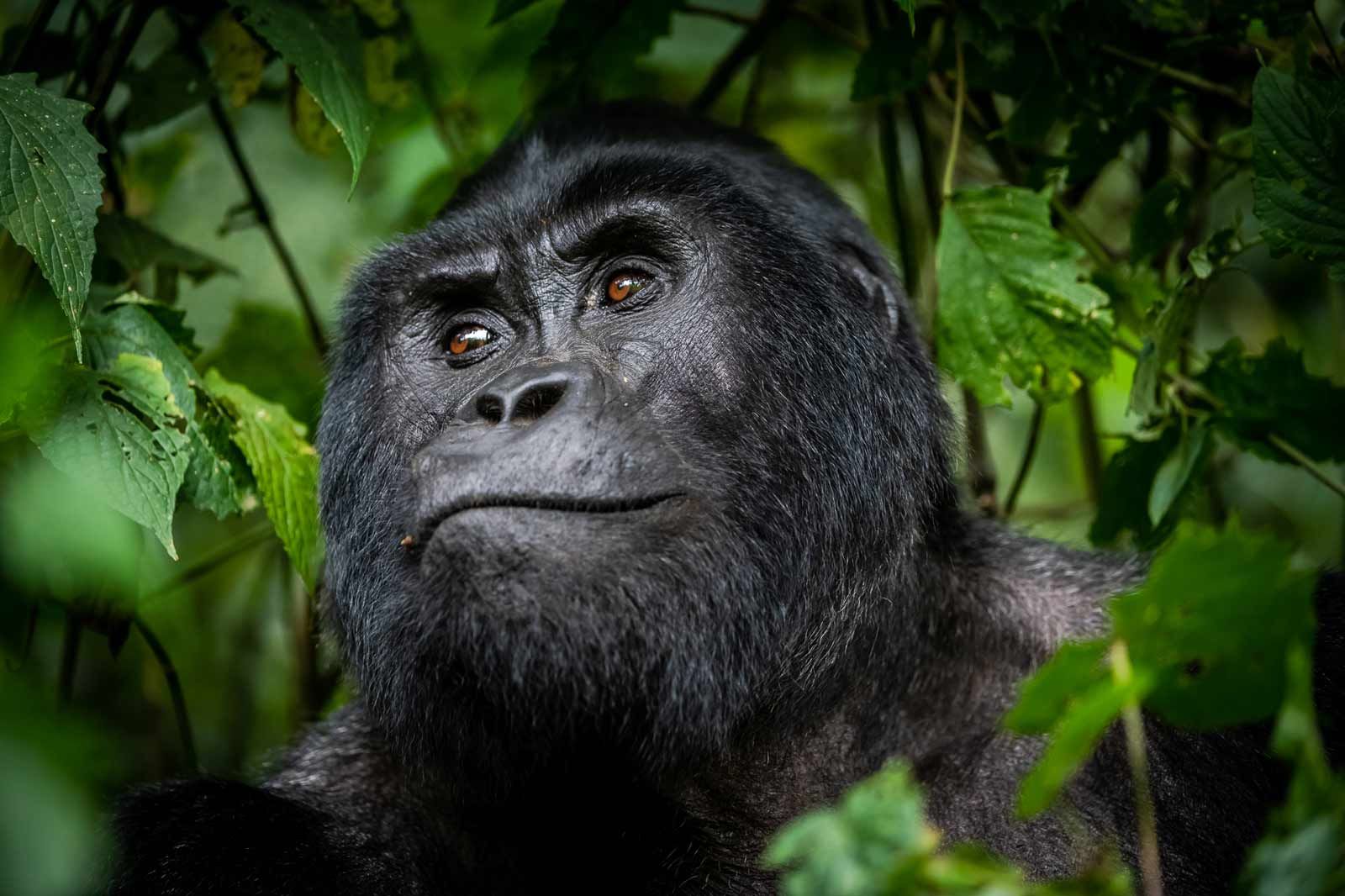Interesting Formation And Dynamics of Mountain Gorilla Families
Mountain gorillas are so much like humans and studying them is one of the most heart-warming and exciting experiences for any tourist, especially primate lovers. These adorable Great Apes, that share 98.2% DNA with humans spend the largest part of their lives in small social groups dominated by a mature silverback (a matured male characterized by a silver-gray saddle on the back until the hips).
Tracking gorillas families
It is only the young males (known as blackbacks) and bachelor silverbacks (the losers) that are known for spending long periods of time ranging solitarily. The characteristics and stability of gorilla families differ significantly, both in the mountain gorillas and the other three gorilla sub-species (Eastern lowland, Cross River, and Western Lowland gorillas). For instance, the mountain gorillas that were studied in Volcanoes National Park’s Karisoke Research Center included small families with as small as two members as well as those with as many as 65 members.
The Western lowland gorillas, in West and Central Africa, have surprised researchers by typically living in breeding groups that include a number of females as well as their offspring. However, they have been observed to also form families that don’t include any adult females.
Babies are born and raised in breeding groups, which are typically characterized by a number of unrelated adult females, their offspring, and one dominant silverback. For the western lowland gorillas breeding groups rarely go beyond 20 members and these usually have up to 10 adult females. The family size of the Eastern gorillas in Uganda, Rwanda, and the Democratic Republic of Congo are usually on average the same as that of the western gorillas, but also show larger variability.
For mountain gorillas, an adult female gives birth to a single baby gorilla every four to five years. Although very rare. Twin birds are sometimes recorded among these Great Apes (especially mountain, western lowland, and eastern lowland gorillas). Infants are usually weaned at 3 years but continue to stay close to their mothers for a few years while playing with their siblings as well as grooming with their mothers. After 4-5 years, adult females conceive again and give birth 8.5 months later. It is this long birth interval as well as the high infant mortality rate (whereby only two-thirds of mountain gorilla infants as well as half of the western lowland gorillas reach 3 years) that has contributed to the slow population growth rate. On reaching sexual maturity at 8 years, female gorillas either leave or stay in their natal groups. Western gorillas systematically leave their natal families to join solitary silverbacks or other breeding groups. This is fundamental in limiting the risk of in-breeding as the dominant silverback (the only one with the privilege of mating females in the gorilla family) is usually the father to the young female gorilla. For mountain gorillas, leaving natal groups is not always systematic and is not only limited to young females but also the parous females (the ones who have already had offspring). This usually happens immediately after the most recent offspring has been weaned or has died.

Gorilla Trekking
When a gorilla family encounters a solitary silverback or another family, natal transfers can be witnessed. It should be noted that gorillas don’t understand boundaries and their home ranges with neighboring families can overlap thus it is common to occasionally bump into each other or meet solitary males. In such circumstances, the dominant silverback will charge, chest-beat, and try to protect his family hence sometimes fighting (by biting) and at times unfortunately death. The competing silverback will also display antics like charging and chest-beating to seduce females, hoping at least one of the females will be convinced to join him.
Male mountain gorillas begin reproducing at 12-15 years while the Western lowland gorillas become sexually mature by 18 years. The latter leave natal groups before becoming silverbacks, living solitarily for a number of years until they begin to compete with breeding silverbacks to take away their adult females. For the mountain gorillas, young males can remain in their natal groups for more than half their time and become silverbacks. Young males can form non-breeding groups.
The main difference between Mountain and Western lowland gorillas is that in the latter, when the dominant silverback dies, the family will disband and females will join other families or solitary adult males. The breeding groups, usually have a limited duration of time. Interestingly for the mountain gorillas, a family can have numerous related silverbacks and when the leader dies, another one (the strongest or oldest) becomes the dominant one. Having several silverbacks comes with a lot of conflicts, in most cases leading to split and formation of new families/groups led by other silverbacks.
One thing that always leaves researchers scratching their heads is the notion of young silverbacks deciding to remain in their natal groups instead of leaving and becoming solitary. Some think is a strategy for silverbacks as close to half of those that leave don’t manage to reproduce. Staying in a group with an old silverback is a good strategy that usually pays off because there is the hope of becoming the leader in a few years. However, remaining in a group with already 2, 3, or 4 more young silverbacks isn’t a good strategy because only the higher ranking one takes over the mantle of leadership hence leaving is a better decision. Some dominant silverbacks have tolerated subordinate silverbacks and let them sire a small population of offspring. Having subordinate silverbacks is beneficial for protection as they become backup fighters during inter-group encounters, hence attracting more females into the group. Get the opportunity to learn more about gorilla family formation and dynamics by booking your gorilla safari with Maranatha Tours and Travel, and you will be left in awe.
